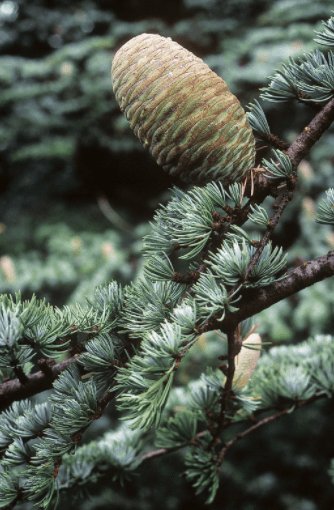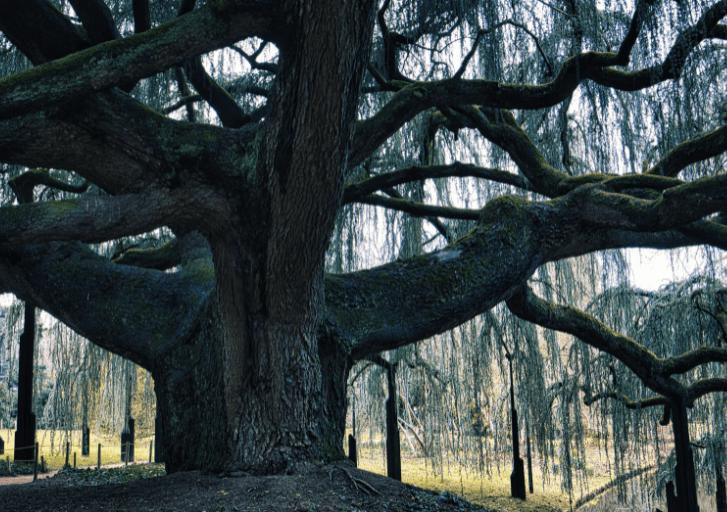Blue Atlas Cedar
The Blue Atlas Cedars are native to Algeria and Morocco’s Atlas Mountains, and they couldn’t be more suited to our environment, growing in hotter, dryer conditions than most conifers.
Cedars are an intimately related group of four trees native to the Mediterranean and Himalayas, so closely related that, if the botanical splitters had their way, the groupers would love to bundle them all together as one species.
The Atlas Cedar and its blue variant and the more well-known Deodar (C. deodara), which enjoys a somewhat damper, milder climate, are both prevalent in Eastern Australia.
The Cedar of Lebanon (C. libani), less widespread in Australia but common in Britain and Northern Europe, and the uncommon Cyprus Cedar are the other two species in the genus (C. brevifolia).
How To Care For Blue Atlas Cedar
The hardiness zone of the blue atlas cedar is USDA Zone 6. Much of Allegheny County is classified as Zone 6a, with winter lows ranging from minus-5 to minus-10 degrees, although Pittsburgh is classified as Zone 6b, with winter lows ranging from 0 to minus-5 degrees.
Whether they live or not is partly determined by where you live. If you live in a city, where buildings and pavement retain more heat than suburban and rural locations, the foliage may simply be scorched and survive. They might not if you reside in the suburbs, particularly the northern suburbs.
It also depends on how long they’ve been growing; established plants have a better chance of surviving extremes than newly planted ones.
Plants that are well hydrated and healthy as the winter approaches will survive better than those that are stressed by drought or pest and disease problems.
Strong winds, in addition to bitterly cold temperatures, are a factor. While most needled evergreens have a waxy covering on their needles to help prevent moisture loss, blue atlas cedar needles are not as waxy as spruce and pine needles.
Strong winds suck moisture through the needles’ stomata (pores), but plants can’t absorb additional moisture from the frozen ground to compensate. The browning you see on the leaves of your blue atlas cedars is the outcome.
Broadleaved evergreens like English ivy, euonymus, pachysandra, and rhododendron are particularly susceptible to this type of harm.
In the case of your blue atlas cedars, the bottom line is this: As the weather warms in the spring, they should start to exhibit fresh growth.
If the foliage was recently burned, the brown needles will fall and new growth will begin to cover the bare branches. If it doesn’t happen, they didn’t make it through the polar vortex.
Blue Atlas Cedar Information
COMMON NAMES: Atlas cedar (C Atlantica Glauca)
FORM: Pyramidal, upright shape.
SIZE: 50-60 feet tall, 35 feet broad; as it ages, growth decreases.
EXPOSURE: Part-shade to full-sun.
LEAVES: Stiff needle-like clusters of bluish-green leaves.
Flowers: Insignificant; in the fall, it releases yellow pollen.
CONES: 1- to 3-inch long cones ranging from purple-green to light green to brown.
Culture: Tolerates heat and clay or sandy soils; prefers acidic soil; requires protection from strong winds. Drought and pollution are tolerated. Zones 6–9 are cold-hardy.
VARIETIES: Blue Atlas Cedar, Glauca, vivid blue-green leaves. The wax deposit that forms on many conifers living in drought-stricken environments gives the leaves their blue tint.
Weeping blue Atlas cedar, Glauca Pendula; bluish tint; branches cascade; espalier on a wall or fence. Stake creates a sculptural, garden art-like structure; branches drip from main limbs like icicles on a roof in the winter.
USES: For holiday decorating, the scent of deodar cedar and pines is exquisite. For a big area, this is an excellent specimen plant.
NO CRUNCHING
Root rot and tip blight are two of the most common problems.
Cooperative Extension of plants


























